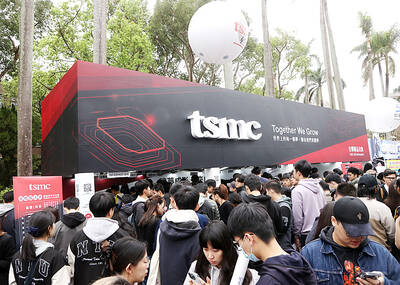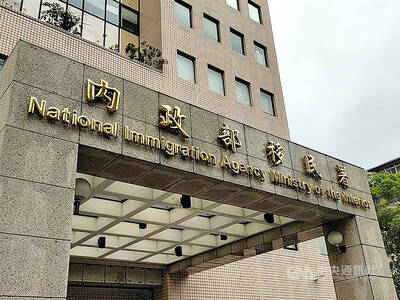The entire Alishan Forest Railway line is to reopen for the first time in 15 years on Saturday, with tickets to go on sale at 2pm today.
The historic railway from Chiayi to Alishan (阿里山) is finally set to reopen after the completion of the final No. 42 tunnel, Alishan Forest Railway and Cultural Heritage Office Deputy Director-General Chou Heng-kai (周恆凱) said.
It is to run on a new timetable, with four trains daily, he said.

Photo: Taipei Times
The 9am train is to depart from Chiayi Railway Station bound for Shizilu Station (十字路), while the 10am train departing from Chiayi is to go all the way to Alishan Station with an hour-long stop at Fenqihu (奮起湖), Chou said.
An 11:50am train is to depart from Alishan for Chiayi, while a 2pm train is to leave from Shizilu for Chiayi.
Tickets for trains between Saturday and July 16 are to go on sale at 2pm today on the ticketing Web site.
The journey along the entire line to Alishan is to cost NT$600.
Tickets for the full journey to Alishan Station are to go on sale 14 days ahead of time. If seats are still available, bookings would open for the section between Chiayi and Fenqihu three days in advance.
In operation since 1912, the 71.4km Alishan Forest Railway was initially built to transport timber down the mountain, but is now used for recreational purposes.
Sections near the end of the line have remained closed since 2009 following damage from Typhoon Morakot.

CAUTION: Based on intelligence from the nation’s security agencies, MOFA has cautioned Taiwanese travelers about heightened safety risks in China-friendly countries The Ministry of Foreign Affairs (MOFA) yesterday urged Taiwanese to be aware of their safety when traveling abroad, especially in countries that are friendly to China. China in June last year issued 22 guidelines that allow its courts to try in absentia and sentence to death so-called “diehard” Taiwanese independence activists, even though Chinese courts have no jurisdiction in Taiwan. Late last month, a senior Chinese official gave closed-door instructions to state security units to implement the guidelines in countries friendly to China, a government memo and a senior Taiwan security official said, based on information gathered by Taiwan’s intelligence agency. The

Taiwan Semiconductor Manufacturing Co (TSMC), the world’s largest contract chipmaker, said yesterday that it is looking to hire 8,000 people this year, at a time when the tech giant is expanding production capacity to maintain its lead over competitors. To attract talent, TSMC would launch a large-scale recruitment campaign on campuses across Taiwan, where a newly recruited engineer with a master’s degree could expect to receive an average salary of NT$2.2 million (US$60,912), which is much higher than the 2023 national average of NT$709,000 for those in the same category, according to government statistics. TSMC, which accounted for more than 60 percent

Tung Tzu-hsien (童子賢), a Taiwanese businessman and deputy convener of the nation’s National Climate Change Committee, said yesterday that “electrical power is national power” and nuclear energy is “very important to Taiwan.” Tung made the remarks, suggesting that his views do not align with the country’s current official policy of phasing out nuclear energy, at a forum organized by the Taiwan People’s Party titled “Challenges and Prospects of Taiwan’s AI Industry and Energy Policy.” “Taiwan is currently pursuing industries with high added- value and is developing vigorously, and this all requires electricity,” said the chairman

The National Immigration Agency (NIA) said yesterday that it will revoke the dependent-based residence permit of a Chinese social media influencer who reportedly “openly advocated for [China’s] unification through military force” with Taiwan. The Chinese national, identified by her surname Liu (劉), will have her residence permit revoked in accordance with Article 14 of the “Measures for the permission of family- based residence, long-term residence and settlement of people from the Mainland Area in the Taiwan Area,” the NIA said in a news release. The agency explained it received reports that Liu made “unifying Taiwan through military force” statements on her online